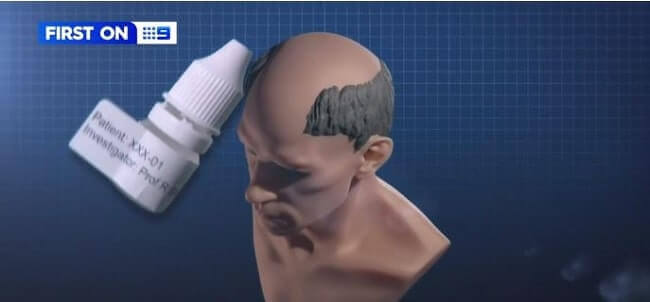Update: Official announcement published on July 16. Better results than Minoxidil, and very optimistic statements regarding pursuing final clinical trials:
- DLQ01 treatment increased total area hair count (TAHC) by 12.3% from baseline.
- 83% of subjects responded with a positive increase in hair growth.
- The comparator drug minoxidil increased TAHC by 9.8% from baseline.
Still no mention of Latanoprost. They just say that DLQ01 is a prostaglandin F2α analog, based on Dermaliq’s novel hyliQ® technology. The latter enables targeted rapid delivery of active ingredients into hair follicles.
July 15, 2024

Dermaliq Therapeutics DLQ01: Phase 2 Clinical Trials Successful
I first mentioned Dermaliq Therapeutics in a 2022 update to my 2020 post on increasing prostaglandin E2 (PGE2) and prostaglandin F2α (also called PGF2α or PGF2 alpha) for hair growth. The US-based privately-held company is working on a topical Prostaglandin F2α analogue hair growth product called DLQ01 (thought to contain latanoprost). It is based on Dermaliq’s novel and proprietary platform technology called hyliQ®.
The company claims that hyliQ “offers cutaneous drug delivery with unmatched bioavailability for a wide range of pharmaceutical actives”. In 2022, Dermaliq started Phase 1b/2a clinical trials for DLQ01 at Sinclair Dermatology in Melbourne, Australia. This clinic is run by the renowned dermatologist Dr. Rodney Sinclair, who I have written about numerous times in the past.

Earlier today, reader “John Doe” found an update on Dermaliq’s pipeline page which suggests that Phase 2 trials are finished and the results were very good. See the above screenshot. It says the following:
“DLQ01 Phase 2 data has impressively demonstrated its superior efficacy. The number of hairs in the target area increased effectively with high statistical significance compared to the vehicle. More than 80% of subjects responded with a positive change in hair growth. We are continuing clinical development based on a clear regulatory pathway to approval.”
To me, this signals that Phase 3 clinical trials are now a certainty. The company’s news page has not been updated since December 2022, but I suspect that this will change soon.
Note that DLQ01 is said to grow hair in both men and women suffering from androgenetic alopecia (aka male and female pattern baldness). According to Dr. Betsy Hughes-Formella (Chief Scientific Officer at Dermaliq):
“Dermaliq’s hyliQ® technology has the potential to transform follicular and dermal delivery of a broad range of active ingredients. DLQ01 is just the start of a promising pipeline targeting follicular delivery.”
Prostaglandin F2α Analogue Latanoprost
Prostaglandin F2α analogue Latanoprost has already proven to grow eyelash hair longer and thicker. Latanoprost (brand name Xalatan) is a medication that is meant to be used to treat glaucoma and hypertension in the eyes. It was approved for medical use in the US in 1996. The eyelash hair growth (and darkening) was a notable side effect.
Several companies are developing combination hair growth products based on Latanoprost. The most promising of these is Triple Hair (Canada), which is on the verge of commencing Phase 3 clinical trials. Another company called Aneira Pharma (US) does not seem to have updated it website for several years. However, the company’s hair growth related patent applications are still being updated as of 2024 (h/t “John Doe”).
